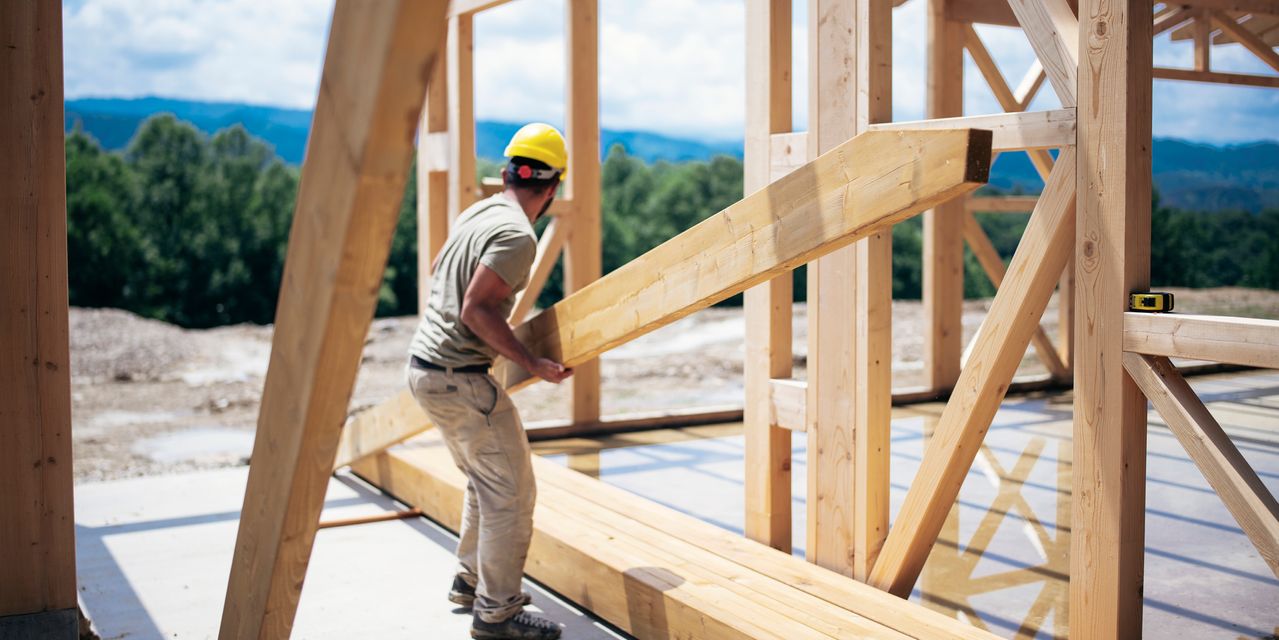
The numbers: New home sales occurred at a seasonally-adjusted annual rate of 1.021 million in March, the U.S. Census Bureau reported Thursday. It represented the fastest pace of new home sales since 2006.
Month-over-month, sales rose 20.7%, and compared with March 2020 sales had more than doubled. Additionally, the Census Bureau revised the sales figure for February up to a rate of 846,000, from the originally reported rate of 775,000.
The median forecast of economists polled by MarketWatch was 888,000.
What happened: Sales rates increased in every part of the country, except the West where they fell 30%. The largest sales gain occurred in the South, with a 40% jump.
Unlike the existing-home sales report, the new-home sales report from the Census Bureau captures sales when the contract is signed rather than when the sale is closed. As a result, March’s numbers likely were not influenced much by the poor weather in February. Parts of the South saw an extended, record cold snap that stalled much business activity throughout the region.
The number of new homes for sale at the end of March remained unchanged from the month prior, but was down 7% from a year ago. However, when the rate of sales is taken into account, the inventory in March only equated to a 3.6-month supply, down from a 4.4-month supply the month before.
The big picture: To borrow the famous line from “Field of Dreams,” if you build it, they will come. In today’s housing market, home builders continue to see elevated demand, in large part because buyers are very much struggling to find existing-homes to purchase.
“ Years of under-building has caught up with the U.S. ”
Years of under-building has caught up with the U.S. Now, the country has a serious shortage of homes — as many as 4 million, according to Freddie Mac — to meet the demand from buyers.
Millennials hit the point in life where buying a home becomes very attractive, and the pandemic has caused people to rethink their living situations. All of which is to say that demand in this market is organic, according to economists, and not fueled by risky lending practices.
Builders, for their part, are having enough trouble keeping up with demand in the marketplace already that they aren’t engaging in speculative construction. Of the new homes sold in March, only about a quarter of them had already been constructed — most were instead under construction or not yet started. A year ago, over 40% of the new homes sold were completed.
Still, there are some headwinds for the market. While mortgage rates have fallen in April thus far, if they begin to rise again in the future that could constrain buyers’ interest in pricier new homes. Plus, builders are struggling with shortages of supplies and appliances, driving up the cost to complete homes.
What they’re saying: “Supply is the biggest limiting factor in home sales. The is a 2.1 month’s supply of existing homes at the current sales rate, which is up from an all-time low of 1.9 months last December,” Chris Low, chief economist at FHN Financial, said in a research note ahead of the new-home sales report’s release.
“But the rise from the low is not because there are more homes for sale, it is because the sales pace slowed,” he added.
“While mortgage rates are a significant factor for home purchases, the biggest issue currently seems to be inventories, and it will continue to be a headwind in the near term,” Rubeela Farooqi, chief U.S. economist at High Frequency Economics, wrote in a research note.
Market reaction: The Dow Jones Industrial Average DJIA, +0.39% and S&P 500 index SPX, +0.66% were both up slightly following the report’s release, while homebuilder stocks — including D.R. Horton DHI, +1.10%, Lennar Corp. LEN, +0.31% and PulteGroup PHM, +0.71% — rose even higher in morning trading.



